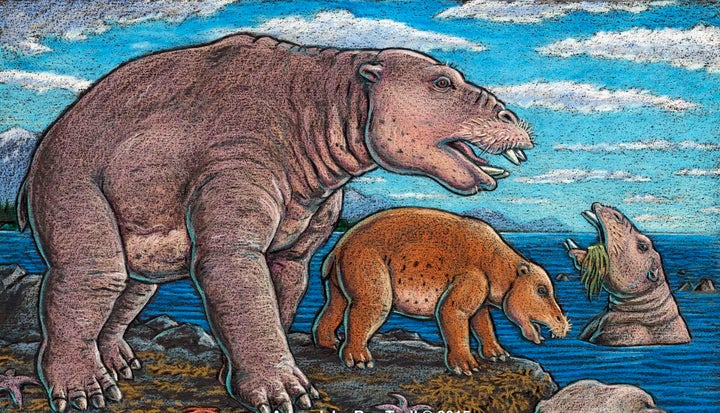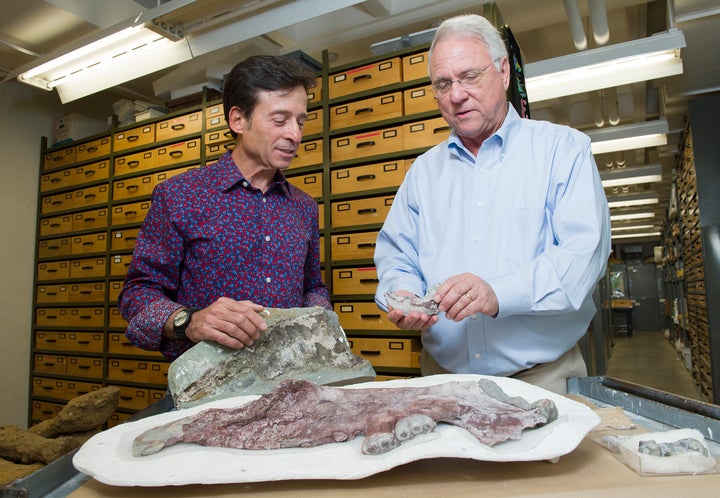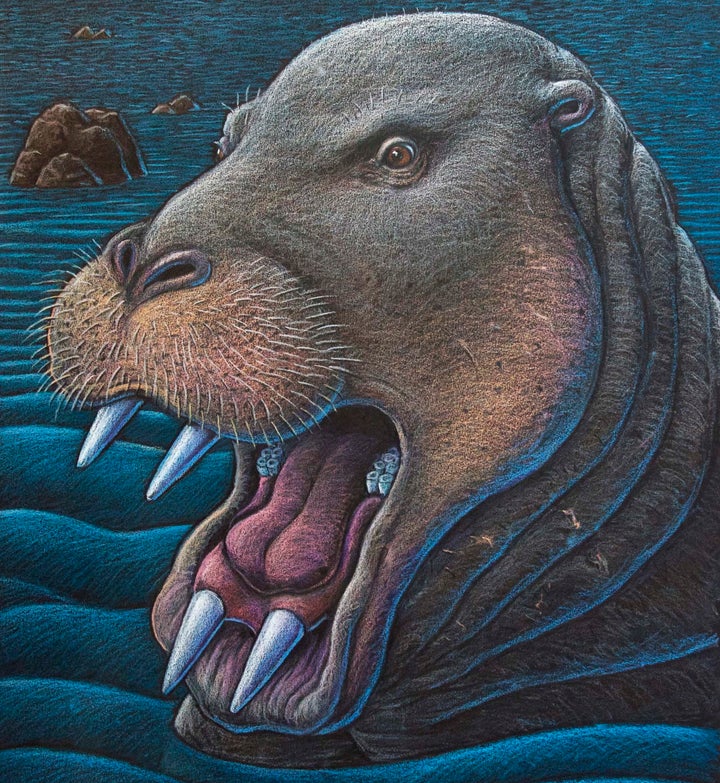
Scientists have discovered a previously unknown creature -- and it ate in a unique way that hasn't been seen before.
The extinct species, which belonged to a group of aquatic mammals called Desmostylia that lived across the North Pacific some 23 million years ago, hoovered up vegetation like some sort of beastly vacuum cleaner, according to a study published last week in the journal Historical Biology.
"The new animal -- when compared to one of a different species from Japan -- made us realize that desmos do not chew like any other animal," Dr. Louis Jacobs, professor of paleontology at Southern Methodist University in Dallas and a co-author of the study, said in a written statement. "They clench their teeth, root up plants and suck them in."
The researchers concluded that the species, which was dubbed Ounalashkastylus tomidai, might have braced its lower jaw and teeth against the upper jaw and used its powerful muscles to suck up vegetation.
Fossilized bones of the species were recently found on the island of Unalaska in the North Pacific, where the Discovery Channel show "Deadliest Catch" is filmed. The fossils were shipped to the Perot Museum of Nature and Science in Dallas for the researchers to examine -- and after taking a close look, the scientists realized the fossils represented a previously unknown animal.

The fossils -- which are believed to have belonged to one adult, one baby and two adolescents -- show O. tomidai as having been big and thick-limbed, with a long snout, tusks, bizarre columnar teeth and a distinctive jaw structure. The scientists believe it swam like a polar bear and survived on marine algae, sea grass and other near-shore plants.

The species likely assembled in herd-like groups called trolls, inhabiting the western coast of North America, from Alaska to Baja, California, and stretching from Russia’s Kamchatka Peninsula to the Japanese islands, Jacobs said.
"These animals take us to the ends of the Earth in two ways, where they lived and how mammals can make a living," Jacobs and Dr. Anthony Fiorillo, vice president of research and collections at the museum and a co-author the study, told The Huffington Post in an email. "Yes, we were surprised."
Check out the "Talk Nerdy To Me" episode below for five other prehistoric mammals that were more monstrous than you'd probably expect.
